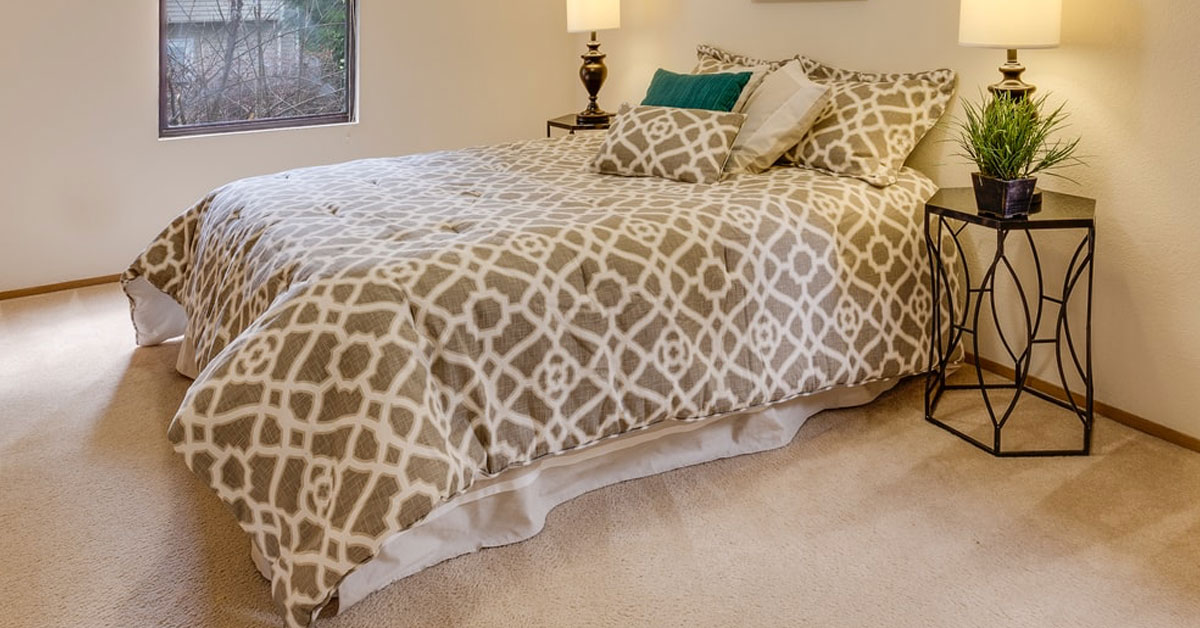There is no one-size-fits-all approach to carpet care, even for facilities of a certain type. However, it is possible for facility managers of long-term care facilities to implement a carpet cleaning program that works for the specific needs of their organization. Take a closer look at the various factors that impact carpet care in these settings.
Facing the Carpet Care Factors
There are numerous elements that will influence the way long-term care facilities approach carpet maintenance. Factors impacting carpet care may include:
- Location. Many older Americans choose to live out their later years in sunny states like Florida, Arizona, Utah and New Mexico. Facilities in these areas will not encounter the same soils that a facility in Minneapolis or Chicago typically would. For example, snow and road salt used to mitigate the effect of snow and ice are common in Midwestern and northern states. Warmer states may be more prone to dealing with sand and small pebbles from beaches and hiking trails.
What might be even more surprising is the fact that the Pacific Northwest has the highest concentration of assisted living facilities. Oregon and Washington have the highest rates of residential care use in the United States, according to data from 2016. These areas also experience frequent rainfall, which can result in wet shoes.
Frequent vacuuming will keep particles from embedding further into carpet tufts and backing. Entrance matting can help remove moisture from shoes in wetter climates, confining the soils and moisture closer to the entrance.
- Size of the facility. The square footage of a facility may dictate how many carpet care machines, as well as which sizes, staff will require to keep carpet in good condition. For instance, a carpet agitator with three brushes and a width of 12 inches can clean up to 9,000 square feet of carpet per hour. A smaller machine also allows employees to easily clean in between obstructions such as chairs, coffee and dining tables and beds. Meanwhile, a 20-inch three brush machine can clean more than 18,000 square feet per hour.
- Assess the square footage of all carpeted areas as well as how many employees the facility has on hand to perform carpet care. This will help guide the decision about how many machines and which sizes and types to purchase. Some facilities have separate buildings, so it may make sense to have a carpet agitator in each building to eliminate transporting the machine from one building to the next.
- Cleaning program budget. It is true that no facility has an unlimited budget for cleaning. There are certain limits to every cleaning program’s scope. However, the coronavirus pandemic has ushered in new attitudes around cleanliness. Cleanliness supports health and safety and promotes the perception that a long-term care facility cares about its residents.
- The budget may influence how often employees can conduct carpet care. At minimum, conduct regular vacuuming. If time allows, staff should conduct interim maintenance every couple weeks in the areas that are at the highest risk of experiencing spills and spots. It is also important to remember that purchasing low-quality chemistries can actually lead to larger problems down the road. Review the total cleaning program budget and aim to make room for high-quality cleaning solutions so that staff can put less effort into cleaning and achieve great results.
- Cleaning staff’s schedule. Does the cleaning team typically work in the evening hours when fewer residents and visitors are present? If so, confirm that equipment such as vacuums and carpet care machines operate at reasonable decibel levels to limit disturbances. If cleaning mostly occurs during the day, it is paramount that employees have access to carpet agitators that do not rely on large volumes of water. The less moisture that is used, the quicker carpet will dry. A low-moisture encapsulation system will use three to 12 times less water than traditional carpet cleaning machines and will enable carpet to dry in as little as 30 minutes.
Additionally, if staff typically conduct interim carpet maintenance only once or twice per month, the facility may be able to make do with just one carpet agitator that employees can share to address spots and dirtied areas as they arise.
Creating a Clean Home for Residents
Cleanliness is crucial in long-term care facilities where residents may have underlying health conditions and compromised immune systems. Regular carpet care supports good indoor air quality and is instrumental in limiting the symptoms associated with asthma and allergies. Not every long-term care facility will approach carpet care from the same angle. This is because they are dealing with various types of soil, square footage and even budgets. However, regardless of the location, facility size and the scope and setup of the cleaning program, prioritizing carpet care is always a good idea. It will keep the facility looking clean for residents, prospective residents and family and friends who wish to see loved ones after a tumultuous 2020 that placed visitation restrictions on many elder care facilities due to the coronavirus pandemic.

